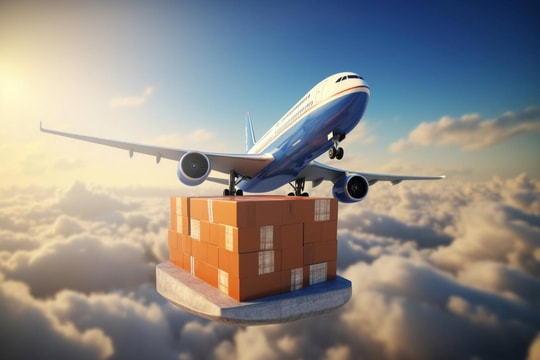
Slowing Growth
According to IATA, global air freight volume in 2025 is expected to grow by only 0.7%, reaching approximately 76 million tons—significantly lower than the previously forecasted 80 million tons. This marks a clear deceleration from the strong rebound in 2024 when volumes rose by 12% thanks to the boom in e-commerce and global consumer demand post-pandemic.
This stagnation does not stem from a single cause but is the result of a combination of global factors. IATA notes that, in addition to geopolitical tensions, fluctuations in exchange rates and inflation in many regions have weakened global consumer demand. Particularly in developed economies like the U.S. and Europe, consumers are shifting from spending on goods to spending on services, affecting the demand for air freight—which predominantly serves products like electronics, pharmaceuticals, and luxury fashion.
Furthermore, the stabilization and trend toward "regionalization" of global supply chains have reduced the need for cross-border transport, directly impacting air freight volumes. Businesses are choosing to set up distribution centers closer to customers, which reduces delivery times but also diminishes the role of express air transport.
Trade Tensions and the Recovery of Sea Freight
One of the key contributors to this decline is the increase in trade tensions, especially between the U.S. and China. The U.S. suspension of "de minimis" tax exemptions for low-value shipments from China and Hong Kong has led to a nearly 30% drop in air freight capacity between the two countries. This has significantly affected Asian airlines that heavily rely on e-commerce cargo.
Additionally, the recovery of sea freight post-COVID-19 has also reduced the demand for air freight. Many businesses have shifted to sea transport due to its lower cost and greater cargo capacity.
Impact on Airlines and Logistics Operators
The impact of the air freight growth slowdown extends beyond volume figures to affect the business strategies of airlines and global logistics firms. Many airlines have had to adjust their cargo fleet capacities, postpone expansion plans, or explore more flexible solutions such as ACMI leasing (Aircraft, Crew, Maintenance, and Insurance) instead of owning their entire fleet.
FedEx, UPS, Lufthansa Cargo, and Singapore Airlines Cargo have all reassessed their international transport networks, including reducing flight frequencies or rerouting flights that previously handled high cargo volumes but have recently seen significant declines. Some carriers in Southeast Asia are also exploring intra-regional routes instead of relying on traditional international lanes like China–U.S. or Europe–East Asia.
On the other hand, logistics operators are being pushed to innovate operational strategies. The trend toward technological integration to improve efficiency—such as route optimization, warehouse automation, and big data forecasting—is gaining traction. Major logistics companies like DHL, Kuehne + Nagel, and SF Express have actively invested in digital platforms and service innovations to offset revenue losses due to reduced cargo volumes.
Competition in the sector is also intensifying. Many sea freight operators are moving deeper into integrated logistics, including air cargo. Maersk, for instance, now owns its own cargo fleet and operates dedicated air freight routes for major customers—an area traditionally dominated by logistics companies.
The decline in air cargo growth is not only the result of economic factors but also reflects changes in consumer behavior and corporate strategies." — Marco Bloemen, CEO, Aevean

Outlook and Challenges
Despite short-term challenges, the air freight industry still holds long-term growth opportunities, especially as the digital economy continues to expand. Demand for fast delivery—particularly in cross-border e-commerce, pharmaceuticals, and high-tech products—remains a key growth driver. According to Boeing’s World Air Cargo Forecast 2024–2043, global air freight volume could double over the next 20 years, with the Asia-Pacific region leading in growth rates.
In the long term, major trends like digital transformation, automation, and sustainability requirements will continue to reshape the market. Airlines will need to invest more in fuel-efficient aircraft, real-time cargo tracking systems, and big data analytics for accurate demand forecasting.
However, to turn potential into reality, the air freight industry will need to overcome a range of challenges, including infrastructure limitations, trade regulations, environmental standards, and fierce competition from other transport modes like shipping and multimodal logistics.
Air Freight Growth in 2024: 12%
Forecasted Growth in 2025: 0.7%
Total Industry Profit in 2025: $36 billion
Decline in China–U.S. Air Freight Capacity: nearly 30%
Source: Reuters
The slowdown in global air freight growth in 2025 signals that the industry is entering a phase of rebalancing. Factors such as trade tensions, the recovery of sea freight, and changes in consumer behavior are reshaping the market. To maintain and grow, airlines and logistics operators must be agile, innovative, and invest in technology to meet the ever-evolving demands of the market.





.jpg)


.png)
.png)
.png)


.png)
.png)






.png)

